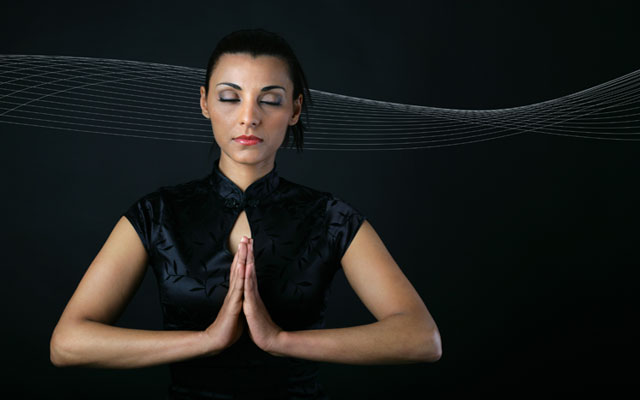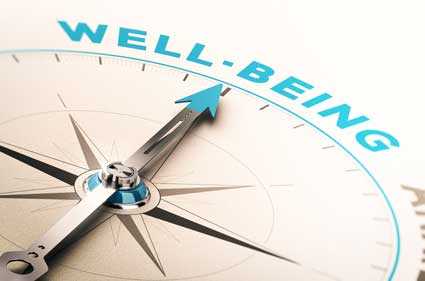There are a few technical terms in this article, but they will prove to be quite important. In order for us to approach some subjective aspects of the art of breathing, we must first have an objective look at what it means to breathe.
Understanding the processes and mechanisms of your breathing is a great start, if you want to be able to master the art of breathing. If you have a good idea of where the air goes, which muscles help you with breathing, and the different types of breath you can take, then chances are you will be able to make informed choices when it comes to practicing and improving your breathing habits.
While breathing seems – and is – such a simple, effortless activity, you will be surprised at the complex series of events that take place in your body for you to simply be able to breathe in and out. It really is a beautiful thing!
Have you noticed there are lots of different "types" of breathing? We're not talking about "nose" or "mouth" breathing, but different types of breathing responses, speeds, depths, and intensity, as reactions to our emotions.
|
- How do you breathe when you are angry?
- How is your breathing when you are crying? - When you are glowing with happiness, is it a different type of breathing than when you are no more than slightly pleased? - Why do we describe exciting, beautiful things as "breathtaking?" |
Take a moment to think about the questions above. You will probably agree that our breath is driven – and sometimes even totally controlled – by our emotions.
It is also crucially important to be able to achieve a free-flowing, full breath, if we want our communication to accurately reflect our emotions. After all, voice is, to put simply, air being projected through your body.
So in order to facilitate the process of having a conscious, intention-filled breath, let's have a look at why and how the body achieves what we call breathing.
| Did you know that… … though air goes in and out of our lungs, the action of breathing is caused by the muscles surrounding the lungs? |
Our lungs are a group of tubes that branch out, with small air sacs at the extremities. What is really interesting is that none of this apparatus can move on its own!
The waste product of this process, which uses energy, happens in the form of carbon dioxide. Here the reverse happens: From the bloodstream, carbon dioxide travels to the little sacs, through the tubes, up your windpipe and out of your mouth or nose.
All of this takes place in order for us to do perhaps the simplest thing we know how to do: breathe in, breathe out, breathe in, breathe out.
Many, and possibly most, of the exercises done to "open up" the breath, or to breath freely and fully, involve our back muscles, intercostal muscles (the muscles between the ribs), and even pelvis muscles. Here is why: These muscles cause the lungs to inflate and to deflate! Without them, breathing would be impossible. The lungs are attached to this structure, so any time the structure moves, so do the lungs. If the structure moves away from the lungs, the lungs follow the movement, expanding; if the structure moves toward the lungs, they move inward, contracting.
This structure around the lungs has muscles and bones as its main components, the ribs and the diaphragm playing a huge part in the quality of our breathing. The diaphragm is a sheet of muscle, shaped like a parachute, and located between your chest and your abdomen. It is relatively large and it is formed of two domes that are connected by a tendon in the center. When we breathe, the diaphragm (which is attached to the bottom of the breastbone and wrapped all the way around the side of the lower ribs and lower back) contracts, pulling down the domes. This causes the lungs to also be pulled down, expanding them. Our belly "inflates" because the contents of the abdomen are also pushed down.
When we let air out, the domes go back into their regular place, leaning against the lungs, and gently pushing on them.
The breathing movement is nothing more than lungs being:
1. Pulled on (in-breath)
2. Pushed on (out-breath)
The body seeks to keep the same air pressure inside your lungs, so when you breathe in and the lungs expand, oxygen rushes in to re-establish the pressure levels -- and vice versa. When you breath out and the lungs contract, air rushes out, once again restoring the pressure levels back to normal.
| Picture this: an accordion being played. If you can, find a video of it. Does it "breathe" in and out? When does the sound come out stronger? Is it similar to the way we breathe? |
Though there are similarities to the way an accordion works, our lungs are shaped very differently: They are large at the bottom and gradually reduce in size, becoming small at the top. "Opening" the ribs is key to realizing breath at its full potential, and once you achieve it, you will feel the sensations of breathing fully through your belly – not your chest.
Now that we have a basic understanding of the processes involved in breathing, it will become easier to make sense of terms like "back breathing," "rib breathing," "opening up," and others. They relate specifically to being able to get the muscles actively involved in the pulling and pushing of the lungs. Though a lot of work on breathing is based on suggestion and visualizations, we have seen that our muscles, even if they don't actually "carry" the air itself, play a huge part in our breathing, from the beginning of the in-breath, to the end of the out-breath. It is not an exaggeration to say that our whole body is involved in the process of breathing, though this involvement can be a healthy one or a limiting one.
Understanding the physical connection between body and breath is part of understanding the emotional connection between body and breath. Breathing is, among other things, an emotional action or response; and while it is linked to our body's very survival needs, it is also strongly related to our feelings and thoughts -- the in-breath relating intimately to the emotional response we have to a situation or thought; the out-breath importantly related to how we communicate these feelings and thoughts to the rest of the world.
Creating a Breathing Routine
Every morning, he would wake up, and the first thing he would do was to purge breathe for one minute, and then hold his breath for five-and-a-half minutes. He would repeat this eight times -- meaning, that for the first 52 minutes he was awake, he was only breathing for eight of them.
Again, I do not recommend you try any of this. The point here is that David Blaine followed this ritual of sorts for months, every day. He created for himself a routine and stuck to it; it became part of his day.
He had the discipline to maintain his routine, even if it may have been uncomfortable, because he was still focused on his goal. He eventually broke the world record.
You may not have the desire or the goal to hold your breathe for over 16 minutes. But you may want to control nervousness or anger; speak more confidently in front of others; bring yourself to a relaxing state; have different modes or levels of energy and focus; or simply to breathe better.
A routine will help you achieve your goal.
And even if you don't have a particular goal you set out to achieve, you will most probably notice general improvements in mood, energy, and even attitude, if you have what we will call a Daily Breathing Routine.
How to Create a Breathing Routine
Our breathing patterns are most natural when we are relaxed. Have you ever noticed how just barely noticeable your breathing is when you have just woken up? The air flows freely, in a slow rhythm, and the transaction between inhaling and exhaling is almost imperceptible. If you picture it, one could see it as a very circular, round, and continuous breathing. But then, what happens? We have barely opened our eyes and start thinking about that work meeting we are not particularly looking forward to, or that rent is due today, or that it's your uncle's birthday and you will have to call him later, but first you need to plan what to say, because if you just word vomit it may be awkward, etc, etc, etc. Brain filled with thoughts, running around a million miles per hour, right after you awoke. That is quite the transition, isn't it? To go from your most relaxed state and natural breathing, to a tornado of thoughts and worries. You may not notice it, but your breathing gets heavier, possibly uneven, and you're off to another day in the life.
Right now, as you read this, take a deep breath. Go ahead.
Most of us, when asked to do so, take a deep breath that would make the Big Bad Wolf jealous: chest inflating and shirt buttons almost popping out.
- Place one hand on your belly, and the other on your chest. Which one is moving?
You will probably be breathing "through" your belly.
Have you ever noticed how babies breathe? Whether asleep or awake, you'll notice their belly, not their chest, go up and down, up and down. We then, as we grow up, acquire all sorts of habits that change our most natural, beneficial patterns. When you breathe through your belly, air flows more effortlessly, allowing a more efficient supply of air to your body and providing stronger vocal support.
- Mentally go through the activities you have planned for your day – again, still trying to maintain the natural, relaxed breathing pattern you had during your sleep. It's normal that your heart rate will increase, and your breathing will start to change. What is important right now is that you notice those changes; that you are aware of variations in your breathing. If that happens, close your eyes, and try to focus on your breathing only. Notice what it is doing, and become aware of how your body is responding to thoughts or movements.
To try to go back to a relaxed, controlled breathing, your body and mind may need a little help.
| Here is an easy exercise you can do: - With your eyes shut, place one hand on your belly and the other on your chest. - Slowly breathe in, counting to five in your head. - Use the same counting speed to count to five again, as you slowly breathe out. Repeat this several times to help your body get into a rhythmic breathing pattern. The count can be to three, or to 10, as long as it's the same in and out, and the breathing is taking place slowly. - Take some time to notice what this exercise has done for your breathing, and your physical and mental state. Are you feeling more relaxed? More awake? More focused? There is no right or wrong answer here. Different people will find different results, and a lot of the Art of Breathing consists of being able to identify what works for you and how it works for you, learning to use these discoveries in your favor at any time and place. Let's repeat this exercise two more times before you go to sleep at night. |
As your day goes on, your breathing patterns will most likely change without you even noticing.
By mid-day, you may have had some problems to resolve at work; wonderful news; bad news; physical exercise or mental stimulation. All these experiences, these hundreds – if not thousands – of small experiences we go through during the day have their own weight, both in our bodies and mind.
Either during lunch break, or at some point during the afternoon, take a few moments to notice how your breathing is different from the time you woke up.
|
Repeat the exercise, consciously breathing in and out slowly, counting to five while you inhale, and again counting to five when you exhale. Repeat several times; starting at three minutes is a good beginning place. When you feel comfortable and have an established routine, ask yourself these questions:
Having restored a rhythmic breath through your belly, do you feel your energies were recharged? Calmer? No difference? How does what you feel now differ from what you felt after you did this exercise in the morning?
|
Going once again through the counts as you slowly breathe in and out, in addition to your tiredness, will very probably send the signals to your body and mind that you are ready to take a break and get some sleep. Many times when you lay in bed, eyes wide-open with racing thoughts, falling asleep is not really about controlling your thinking – it's about controlling your breathing.
This is just the beginning of a simple, but effective routine. As your routine gets established and you discover exactly what works better for you, you can add more and more exercises to it, performing them at chosen times and optimal durations, which will be your own.
You will find many exercises that can be incorporated into your routine,mostly in regard to opening up your ribs, belly, and back in order to breathe fully and freely. They can be used for general or specific purposes -- to calm down, to feel re-energized, to warm up, to give a speech -- and it is up to you which ones you find most beneficial to your day.






























